Beginning of article here.
Loopy seam
This seam is often used for registration and strengthening of edges. Bring needle to upper side of knitted cloth at some distance from edge. For the first stitch send needle to seamy side, having slightly displaced from point of entry to the right. Carry out needle through eyelet and tighten. Repeat actions along row, observing interval, length and tension of stitches. It is necessary to consider that the loopy seam reduces elasticity of edge.
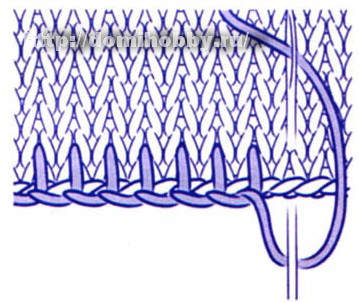
Simple bilateral smooth surface
It is series of the direct stitches which are densely covering cloth. Bring needle to upper side in point at one edge of the embroidered figure. Send needle through point at the opposite edge of figure back, return it on upper side, having receded from point of the first input distance in thread thickness. Send needle to seamy side, having receded from the first stitch and from the second point of input the same distance.
For creation of small volume effect at first execute smooth surface in one direction, and then once again at right angle to
to the first layer of smooth surface. It is difficult to provide with too long stitches necessary tension therefore it is better to divide them on two short, splitting the first stitch the second in the middle.
The seam demands constant attention to tension of stitches as they can pull together fabric. For difficult drawings it is better to lay knitted cloth the flizeliny. Sometimes it is required to split threads of knitted cloth to achieve equal smooth surface.
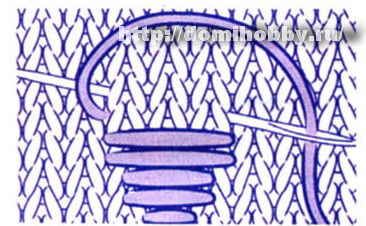
Seam plumelet
This seam is kind of vestibule seam and consists of two columns of the open vestibule stitches executed alternately.
Bring needle to upper side of cloth and direct on seamy side a bit more to the right, make stitch needle forward, having removed needle between point of entry and point of exit of needle halfway nearby (or several rows) below, place thread of the first stitch under needle and tighten. For the following stitch direct needle through cloth back, a bit more to the left. Make small stitch needle in average point forward, taking thread as it is described above.
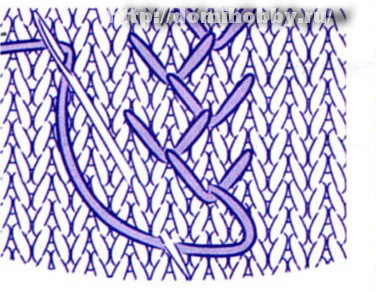
Seam short flight of stairs
The seam can be used for connection of two edges or for creation of volume superficial texture.
Bring needle to upper side in upper left point of short flight of stairs. Make the first horizontal stitch to the right. Remove needle a little above the right point of horizontal stitch and return on seamy side below this point, having created small vertical stitch.
Bring needle to upper side a little below than the left point of horizontal stitch and stretch from top to down under thread of horizontal stitch.
* Stretch needle under threads of the horizontal and vertical it is stitch on the right side of short flight of stairs.
Send needle to seamy side and bring to upper side from right to left slightly below than the first stitch. Stretch needle under threads of the vertical and horizontal it is stitch from the left storony*. Repeat from * to *, keeping equal intervals between horizontal stitches.

Models of application of seams for decoration of knitted products.
Loopy seam with beads
Stitches of loopy seam fix beads on the edge of cloth. Before carrying out needle through cloth, string biserina on thread and, passing needle through filar loop, be convinced that the biserina is to the left of needle.
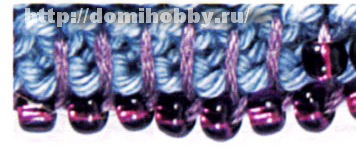
Loopy seam over fringe
On sample the seam is executed serially over one and two loops of bottom edge of cloth.
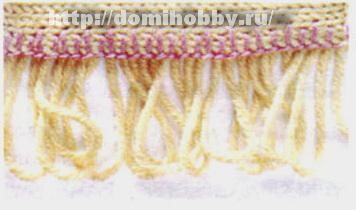
Simple bilateral smooth surface with stuffing
Two stitches are executed over three rows of knitted cloth, and then other stitches are executed at right angle to the previous.
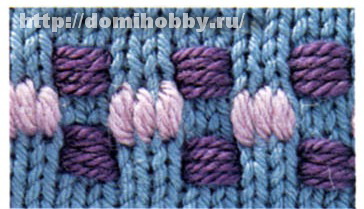
Motive simple bilateral smooth surface
It is possible to transfer any drawing to knitted cloth that then to embroider it. The body of goldfish is embroidered with simple bilateral smooth surface. The tail and fins are embroidered with the French small knots on seamy side of cloth and long tails of threads on upper side. Mouth of small fish - the French small knot, eye - biserin.
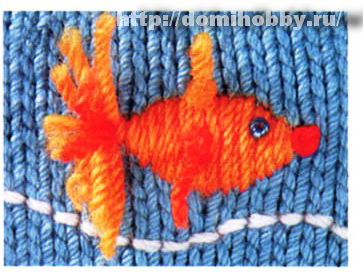
The split gladyevy stitch
Splitting of stitches allows to truncate too long stretched threads and to add additional shades to embroidery. Execute the first stitches approximately one third more long, than it is required for filling of site. Then make the following number of stitches, carrying out them through the first row two thirds higher.
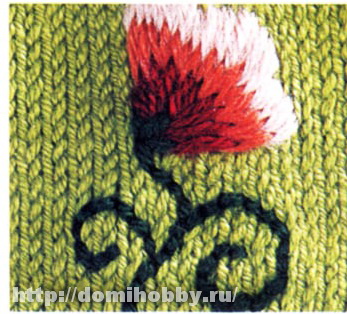
Any seam plumelet
For any seam the stitch forward needle is directed to average point of filar loop that changes the direction of seam plumelet.
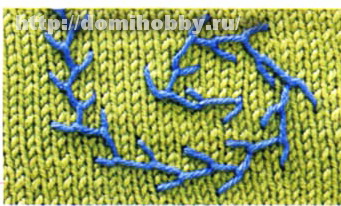
Bichromatic seam plumelet
Fix on seamy side two threads of different flowers (for example, blue and light green). Extend thread of blue color outside through knitted cloth. Direct thread of blue color down from left to right, extend thread of light green color in the middle of loop and tighten thread of blue color round it. Send thread of light green color through cloth down and to the left to exit point, and thread of blue color - in median point.
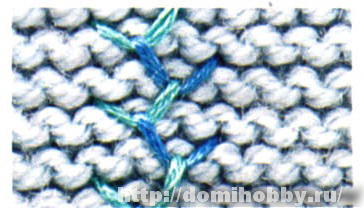
Seam plumelet with beads
Bring needle to upper side through knitted cloth, put on thread even quantity biserin, * execute seam needle forward and send needle up, to the middle of thread with beads. Tighten stitch *, again put on the same quantity of beads and repeat from * to *.
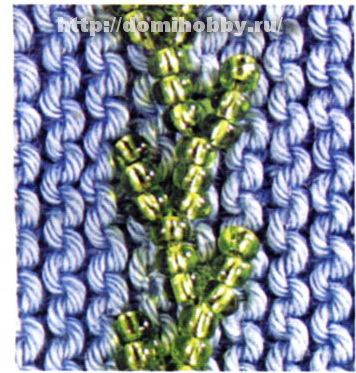
Seam short flight of stairs with beads
At the left: it is possible to add beads and beads to seam, having laid out them on horizontal stitches.
On the right: horizontal stitches are connected together by stitch needle contrast thread back, taking on three horizontal stitches of short flight of stairs.
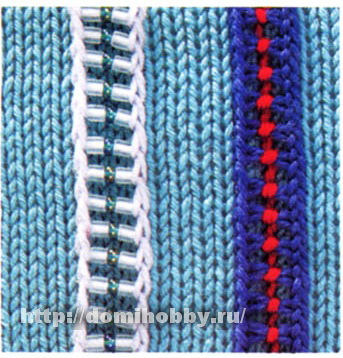
Freely executed seam short flight of stairs.
The distance between two details of knitted cloth is filled with seam short flight of stairs. This seam is elastic and well approaches the fitting models.
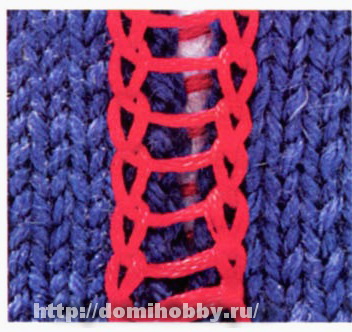
-
No comments:
Post a Comment